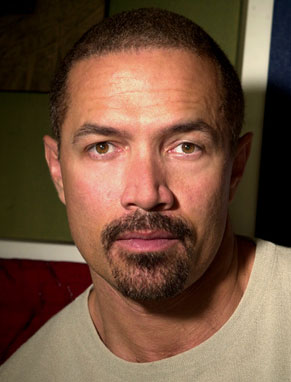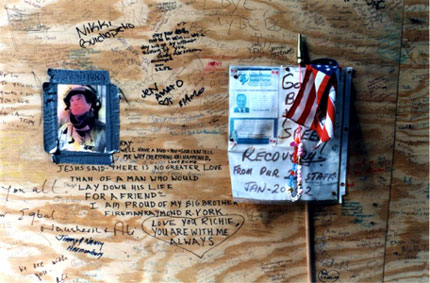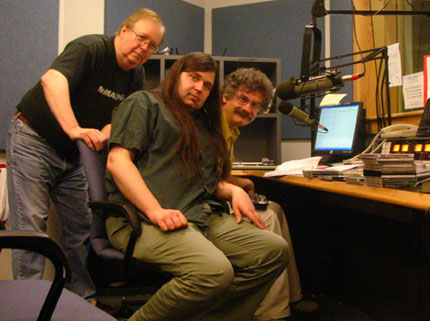 “Music should either touch your soul or make you dance,” Michael Abels says, and though he admits there is a lot of music out there that doesn’t do either, those should be the goals. “I always ask my students ‘what is the purpose of your music?’ You can’t create it unless you know what you want it to do.”
“Music should either touch your soul or make you dance,” Michael Abels says, and though he admits there is a lot of music out there that doesn’t do either, those should be the goals. “I always ask my students ‘what is the purpose of your music?’ You can’t create it unless you know what you want it to do.”
Abels, 45, is a Los Angeles-based composer and educator who heads the Music Program at the progressive New Roads School in Santa Monica, a private K-12 school that–upscale zip code, notwithstanding–has a very diverse student population, with nearly half of the students on scholarship. For Abels, that’s one of the things that makes New Roads a special place.
“Although blacks and Latinos make up 25 percent of the U.S. population, they comprise only about 4 percent of the country’s professional orchestra musicians,” he says. “Part of this is economic; a professional music education costs a lot, but a lot of it is cultural. Promising minority kids often don’t get the encouragement or mentoring they need to push them to next level.”
Abels, whose own background is as all-American as apple pie and ribs, has certainly done his part. He spent the first of two Meet the Composer grants on a three-year New Residencies program at the Watts Tower Arts Center in South Central Los Angeles where, in addition to composing the music for the community-oriented Cornerstone Theater, and a work for the USC Percussion Ensemble, he began a mentoring program for disadvantaged youths in music technology and production techniques.
More recently, Abels has been partnering with the Sphinx Organization, a non-profit organization dedicated to building diversity in classical music, and with the Harlem Quartet, an ensemble comprised of 1st place Laureates of the Sphinx Competition for young Black and Latino String Players. The Quartet is a group of young musicians who spend as much time bringing music into their communities as they do performing in concert halls. All of which is part of a nationwide movement to help increase the number of Blacks and Latinos in music schools, as professional musicians, and in classical music audiences.
Abels’s piece Delights and Dances, (Think the love child of Stravinsky and Copland with a bit of Gershwin for garnish, one longtime S21 reader describes it) written to celebrate the Sphinx Organization’s 10th anniversary, will be played by the Harlem Quartet at its annual Sphinx Laureates concert Tuesday evening, September 25, at 6:00 pm, on Carnegie Hall.
I can’t wait to see if it makes me cry or dance.
p.s. (There will also be music by some cats named J.S. Bach, Coleridge-Taylor Perkinson, Astor Piazzolla, joaquín Turina and Duke Ellington).
 Alas, no composers among the MacArthur geniuses named today but Dawn Upshaw, who probably makes a decent living at this singing and recording business, will be getting a check for $500,000. (I’m not saying she doesn’t deserve it, mind you, just that there are probably equally deserving singers who could use a boost at this point in their career but, then, Ms. Upshaw has had a tough couple of years and could probably use a boost, too, so forget everything I’ve said up to this point.
Alas, no composers among the MacArthur geniuses named today but Dawn Upshaw, who probably makes a decent living at this singing and recording business, will be getting a check for $500,000. (I’m not saying she doesn’t deserve it, mind you, just that there are probably equally deserving singers who could use a boost at this point in their career but, then, Ms. Upshaw has had a tough couple of years and could probably use a boost, too, so forget everything I’ve said up to this point. “Music should either touch your soul or make you dance,” Michael Abels says, and though he admits there is a lot of music out there that doesn’t do either, those should be the goals. “I always ask my students ‘what is the purpose of your music?’ You can’t create it unless you know what you want it to do.”
“Music should either touch your soul or make you dance,” Michael Abels says, and though he admits there is a lot of music out there that doesn’t do either, those should be the goals. “I always ask my students ‘what is the purpose of your music?’ You can’t create it unless you know what you want it to do.”
 Review in yesterday’s NYT of a novel called
Review in yesterday’s NYT of a novel called 
